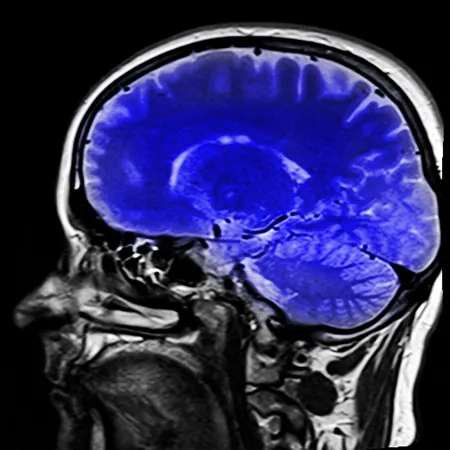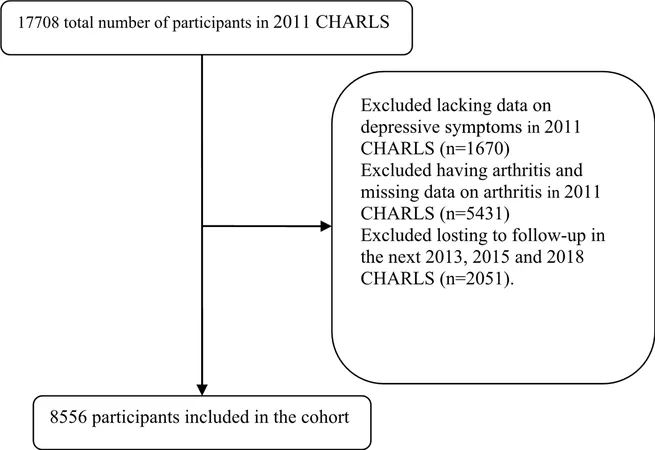
Unlocking the Secrets of Anxiety: Groundbreaking Discoveries in the Amygdala Could Change Treatment Forever!
2024-10-30
Author: Ming
Understanding Anxiety Disorders
Anxiety disorders affect tens of millions of people globally, yet their intricate mechanisms often remain shrouded in mystery. Recent breakthroughs from scientists at the University of California, Davis, have marked a significant leap forward in understanding the amygdala—the brain’s emotional powerhouse responsible for processing fear and anxiety.
Breakthrough Findings at UC Davis
For the first time, researchers have identified distinct cell clusters within this critical region, offering transformative prospects for future treatments. Published in the esteemed American Journal of Psychiatry, this landmark study reveals that rather than the overall size or structure of the amygdala being indicative of emotional disorders, it is the specific types of cells within that structure that may be pivotal in understanding and treating anxiety and depression.
Insights from Research
'The amygdala plays a central role in emotional processing and can significantly contribute to disorders like anxiety. Our findings underscore the idea that variations at the cellular level might trigger these disorders,' stated Drew Fox, associate professor in UC Davis’s Department of Psychology and the study's senior author.
Innovative Research Approaches
Building upon previous research conducted in rodents, the UC Davis team delved deep into the cellular architecture of both human and non-human primate amygdalae. A promising collaboration led by graduate student Shawn Kamboj, in partnership with Professor Cynthia Schumann's lab, focused on identifying cell types based on gene expression.
Cutting-Edge Technology in Use
Employing cutting-edge single-cell RNA sequencing, the researchers meticulously isolated individual cells from brain samples and analyzed their gene activity. This technique enabled the identification of specific cell types that express anxiety-related genes, shedding light on their potential roles in psychopathology.
Key Discoveries
Notably, they discovered a unique cluster of cells expressing the gene FOXP2, situated on the periphery of the amygdala. Remarkably, these intercalated cells are already known to act as 'gatekeepers,' regulating signals in and out of the amygdala in rodent models. This finding opens exciting avenues for developing targeted interventions in anxiety treatment.
Implications for Treatment
Moreover, the researchers uncovered both similarities and distinctive features in the cell types of human and non-human primates. This knowledge is crucial for translating findings from animal models to human conditions, particularly for complex disorders such as anxiety and autism.
Pharmacological Advances
The implications of this research extend into the realm of pharmacology. By identifying FOXP2-expressing cells that also interact with the Neuropeptide FF Receptor 2 (NPFFR2)—a target for certain drugs—scientists now have a clearer path toward developing novel therapeutic strategies.
Looking Ahead
Fox expresses optimism about this breakthrough: 'With a more nuanced understanding of the cellular players at work, we could potentially isolate ‘chokepoints’ that many individuals suffering from debilitating anxiety experience.' As researchers continue to unravel the complex landscape of the amygdala, the promise of more effective, targeted treatments for anxiety disorders looms ever closer on the horizon. Can we truly reshape the future of mental health care? The answer seems increasingly possible!




 Brasil (PT)
Brasil (PT)
 Canada (EN)
Canada (EN)
 Chile (ES)
Chile (ES)
 España (ES)
España (ES)
 France (FR)
France (FR)
 Hong Kong (EN)
Hong Kong (EN)
 Italia (IT)
Italia (IT)
 日本 (JA)
日本 (JA)
 Magyarország (HU)
Magyarország (HU)
 Norge (NO)
Norge (NO)
 Polska (PL)
Polska (PL)
 Schweiz (DE)
Schweiz (DE)
 Singapore (EN)
Singapore (EN)
 Sverige (SV)
Sverige (SV)
 Suomi (FI)
Suomi (FI)
 Türkiye (TR)
Türkiye (TR)